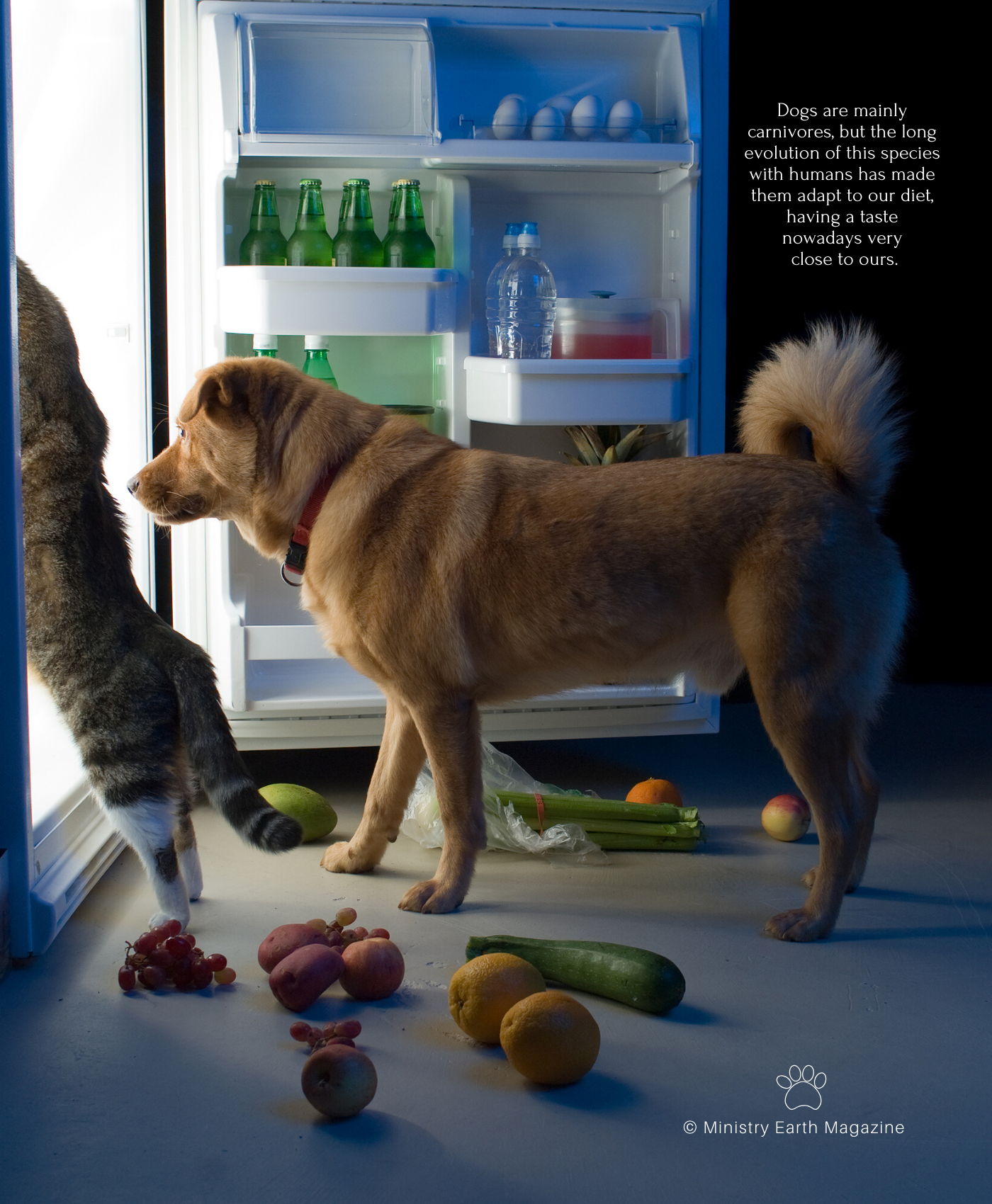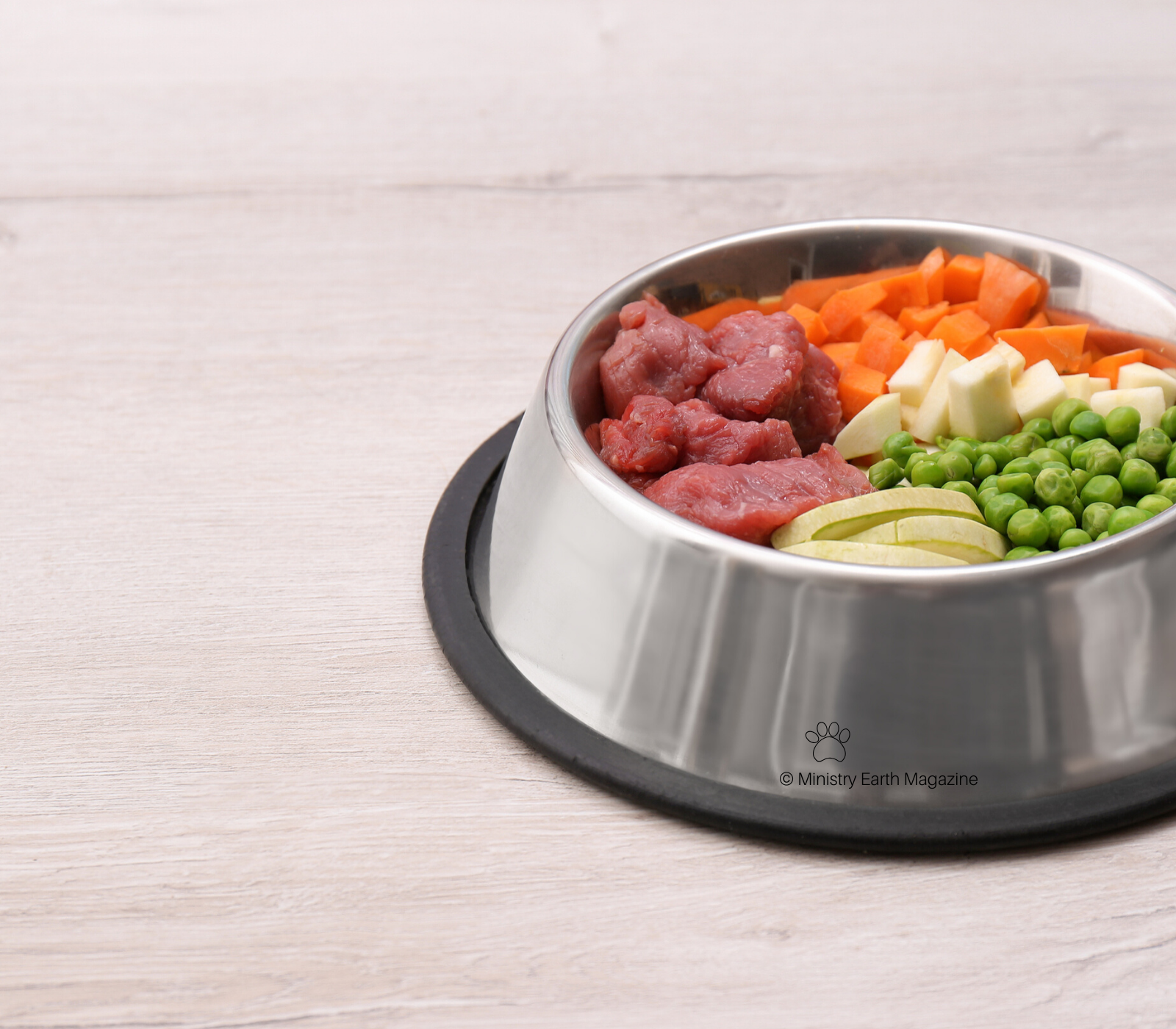An Easy Guide for Homemade Dog Food

What if you exchanged your dog’s ration for your own homemade dog food? Not only is it possible, but, depending on the size of your pet, more economical.
Making Homemade Dog Food
If you have decided to prepare a homemade dog food for your pooch, we have delicious tips for those who want to understand better about healthy dog food made at home.
The Dog is a Domesticated Carnivore
Dogs are mainly carnivores, but the long evolution of this species with humans has made them adapt to our diet, having a taste nowadays very close to ours.
We say, therefore, that the dog is a non-strict carnivore – the basis of its diet is still meat, offal, bones, but can also feed on eggs, vegetables, fruits, and carbohydrates.
The digestive system of carnivores is extremely acidic and can easily digest meat proteins.
On the other hand, dogs don’t chew their food – they just tear and swallow smaller pieces – and they don’t have specific starch digesting enzymes, which is why diets with a high carbohydrate content of many vegetable fibers are not well used by them.
What a Dog Needs
Dogs can eat just about everything we offer them. But the fact that the dog likes it does not mean it is suitable for him!
The basis of a dog’s diet should be good quality animal protein (red meat, chicken or fish), fat, low carbohydrate, and a complement to vegetables.
Dogs and people belong to different species, so don’t give your dog “leftover” food scraps!
Also, don’t try to make your dog a “vegetarian” or “vegan” – people can stay healthy on this type of diet, but unlike us, dogs are still essentially carnivorous animals, and meat deprivation is highly harmful to them.

Basic Diet for a Healthy Dog
Before giving your homemade dog food, make sure he or she is healthy, as dogs with heart, liver, pancreatic, kidney or other chronic diseases need specific nutrition.
An essential diet for a healthy dog can consist of a combination of the following:
• Meat: beef, pork, chicken, rabbit, mutton, fish and even frog or exotic meat;
• Viscera: heart, liver, kidneys, lung, spleen;
• Carbohydrates: sweet potatoes, yams, cassava (cassava), rice (preferably brown), pasta;
• Vegetables: watercress, lettuce, pumpkin, zucchini, beet, eggplant, carrot, chayote, okra, cucumber, green beans;
• Eggshell: Dry and ground eggshells act as a source of calcium.
Food Proportions
A straightforward calculation is to divide the diet into three equal parts this way: meat, carbohydrates, and vegetables. Of the total, add between 5 to 10% of viscera. For example:
• 10.5 Ounces (300g) of meat;
• 10.5 Ounces (300g) of carbohydrate;
• 10.5 Ounces (300g) of vegetables;
• 50g to 90g (3 ounces) of viscera;
• 1 teaspoon eggshell flour
How Much Food to Offer per Day?
The amount of food a dog should eat each day varies according to its age, size, and level of physical activity.
On average, we can calculate:
• Tiny dogs (Miniature Pinscher, Chihuahua): 10% of their weight. That is, a dog weighing 2 and a half pounds will eat approximately 5 to 7 ounces of food per day.
• Small and medium dogs (Poodle, Maltese, Cocker spaniel): 6% of their weight. That is, a dog with 22 pounds (10 kg) will eat 21 ounces (600g) of food per day.
• Large or very large dogs (German Shepherd, Boxer, Rottweiler): 4% of their weight. That is, an 88 pounds dog (40kg) will eat 28 ounces of food twice a day.
Important! These amounts are daily! Therefore, they should be divided into at least 2 or 3 portions in one day. So, an 88 lb. Rottweiler will eat close to 30 ounces, or 1.8 pounds of food, twice a day.

How to Prepare Your Dog’s Food
Food should be cooked in water and without spices.
Carbohydrates and vegetables should always be well cooked, as dogs cannot digest these raw foods. The more cooked, the easier it will be digested and better enjoyed by the dog.
Meat and offal should not be overcooked – preferably leave it undercooked. The dog’s carnivorous digestive system makes better use of it.
When serving, it is best to mix all the food, as often the dog will choose to eat only meat. Add a pinch of salt, if you must.
The prepared food can be separated into small portions and kept in the freezer. This way, we can cook more food at a time and save time daily.
Here are other Foods That May Be Included in your Dog’s Diet
• Eggs: Egg is a food rich in vitamins and minerals and its protein is extremely digestible – a portion of great food to be part of your dog’s diet. The egg can be given once or twice a week, replacing 50g or 3 Ounces of meat with an egg.
• Olive Oil or Coconut Oil: A strand of vegetable oil is beneficial for the dog’s health, especially for the fur and coat.
• Yogurt: Dogs love it, and yogurt acts as a natural probiotic. Avoid yogurt with aromas and sugar.
• Fruits: They can be given to the dog and are healthy, but excess can provide a lot of sugar. Even citrus fruits don’t usually hurt dogs, because their stomach pH is super acidic.
Warning: This guide is a basic guide for healthy dogs, for a diet specific to your dog’s age and physical condition, consult a nutritionist veterinarian.
Dogs with chronic diseases should not change their diet without the supervision of a veterinarian. Get health checks on your dog regularly.

You will also enjoy 8 Foods That Can Kill Your Dog
Connect with Cathedral of the Soul for their upcoming Animal Ministry Course https://www.cathedralofthesoul.org/
Ministry Earth is a collective Awareness-Raising, Perception-Building Initiative from Humanity Healing International, Cathedral of the Soul Educational outreaches created to introduce the perspective of Ethical Consciousness and Nonhuman Personhood to its Animal & Eco Ministries. Ministry Earth is a Service-Oriented Initiative and its Magazine is a Copyrighted Publication of OMTimes Media, Inc. Broadcasting and Publishing House.






